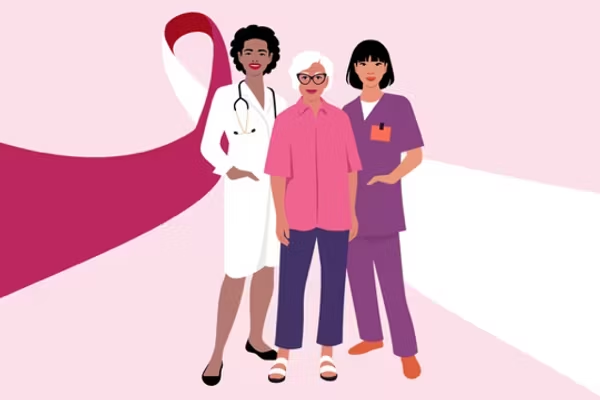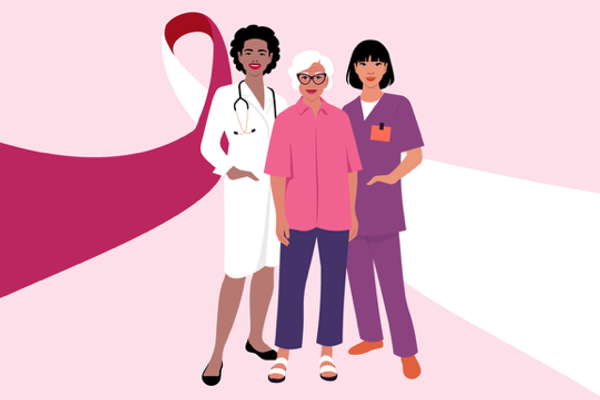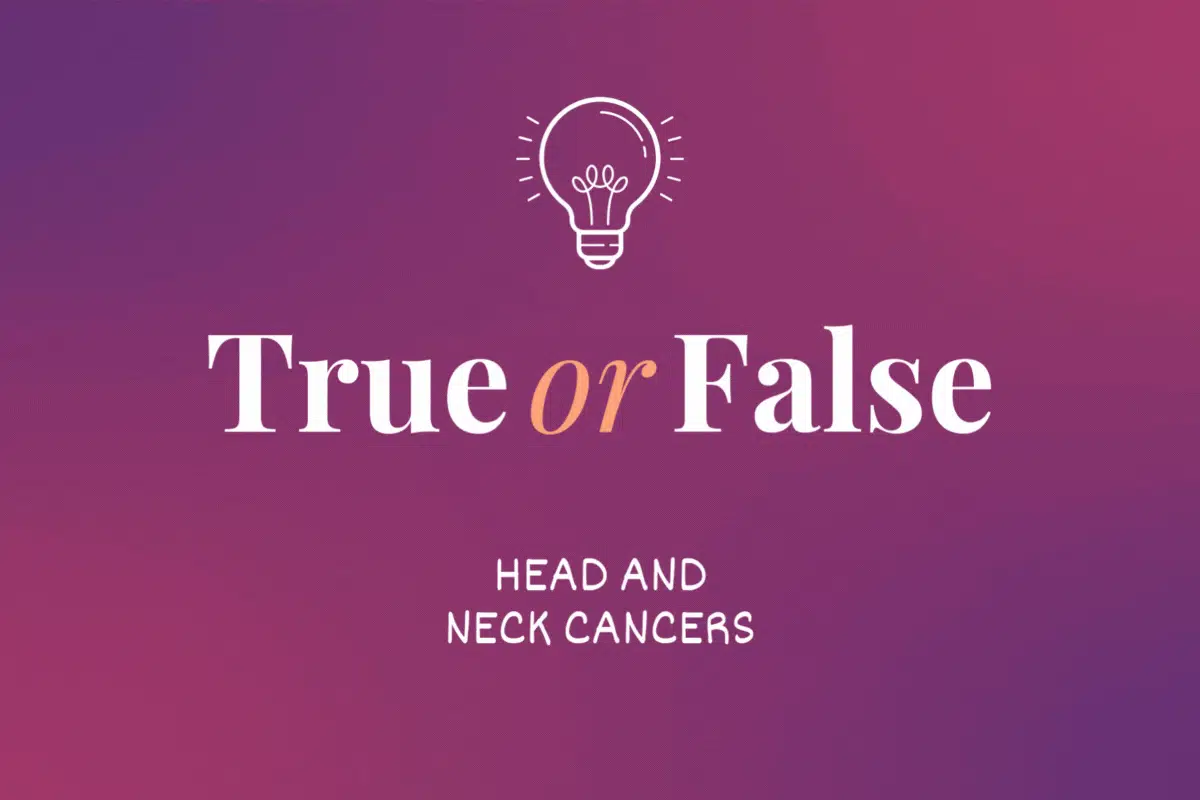Head and neck cancer is a catch-all term that includes cancers of the lips, mouth, voice box, throat and salivary glands. When caught early, these cancers have a five-year survival rate of 70% to 90% with treatment. Unfortunately, most cases of head and neck cancer aren't diagnosed until they've reached a later stage, making treatment much less effective.
If treatment works so well for early stage head and neck cancer, why aren't more people diagnosed before their cancer advances? What's stopping people from getting care sooner?
Uncertainty about head and neck cancer type, symptoms
"There are numerous types of tumors that are seen in the head and neck," explained Dr. Eleni Rettig, a head and neck surgeon at Brigham and Women's Hospital and Dana-Farber Cancer Institute at Harvard Medical School. The most common type of head and neck cancer is squamous cell carcinoma, where cancer develops in cells that make up the middle and outer layers of the skin, she said.
Because head and neck cancer includes several types of cancer, symptoms of these cancers are many and varied. And some of the most common ones, like a chronic sore throat or hoarse voice, can be misinterpreted as a sign of something else (like a cold).
Head and neck cancer and HPV
Risk factors for head and neck cancer include tobacco use, alcohol consumption and HPV infection. Caused by human papillomavirus, HPV infection is responsible for about 70% of head and neck cancer that affects the oropharynx — the back of the throat, including the base of the tongue and tonsils.
"If you have squamous cell carcinoma of the oropharynx, then it is important to know whether your tumor is caused by HPV," Rettig said.
Head and neck cancer caused by HPV is becoming more prevalent. Experts aren't sure why, although one theory is that more people are engaging in oral sex, which can spread the HPV virus.
Stigma surrounds HPV
HPV affects nearly every sexually active person at some point in their lives. About 85% of women and 91% of men will be infected with at least one type of HPV by age 45. But even though HPV infection is widespread, a lot of stigma surrounds it.
Because sexual contact is the main way HPV is transmitted, negative stereotypes may make people less likely to bring it up with their friends or healthcare providers. If a person is experiencing symptoms of head and neck cancer but isn't aware of the connection to HPV, or doesn't want to bring up their HPV status with their healthcare provider, it may take longer to get a cancer diagnosis.
Even after they learn they have head and neck cancer, some people are reluctant to talk about HPV. They may feel ashamed or embarrassed to ask questions about the role HPV plays in their cancer.
HPV vaccine hesitancy and misinformation
There is a vaccine that protects against HPV, including the strains of the virus that cause cancers of the oropharynx. The Centers for Disease Control and Prevention (CDC) recommends the HPV vaccine for everyone up to age 26, as well as some adults up to age 45 who haven't received the vaccine and may be at risk of new HPV infections.
In spite of CDC recommendations, some parents are reluctant to vaccinate their adolescent children against HPV. A 2019 study published in the journal Pediatrics found that parental hesitancy about the HPV vaccine went up from 50.4% in 2012 to 64% in 2018, even though more providers were recommending the vaccine to their adolescent patients.
Public health officials are working to strengthen HPV vaccination efforts on local, state and national levels to help prevent cancers caused by HPV.
Cancer disparities affect many Americans
Health disparities and inequalities can be another barrier to accessing head and neck cancer care. People who live in counties affected by persistent poverty are more likely to die of cancer than those who live in other counties, and low income is linked to poor survival rates of head and neck cancer.
Rural areas, which often have higher rates of poverty and limited access to health care, tend to have higher cancer mortality rates than urban and suburban areas. One study looking specifically at head and neck cancer found that patients living in rural counties were less likely to be diagnosed at a younger age than those in urban counties.
Racial and ethnic disparities also have a big impact on cancer care, as do those surrounding sexual orientation. In one analysis spanning 10 years, Black patients with oropharyngeal cancer had a significantly worse overall survival rate compared to patients of other races. And lesbian, gay and bisexual young people are more likely than their heterosexual peers to drink alcohol and smoke cigarettes, both of which can increase their risk of getting head and neck cancer.
Seeking specialized support
With so many types of head and neck cancer, it can be difficult for newly diagnosed patients to know where to go. Rettig suggests finding a medical practice that specializes in head and neck oncology. "Other specialists you may see include a speech-language pathologist, dietitian and physical therapist," she said.
The importance of routine health care
Concerns about Covid-19 have caused some people to skip or delay medical care and dental care, which can lead to worsening symptoms or missed diagnoses. In the case of head and neck cancer, where early detection is key to improving survival rates, skipping an annual physical or appointment to get the HPV vaccine could mean a much worse outcome.
The bottom line? Don't let fear prevent you from seeing your provider.
This resource was created with support from Merck.
- Ask the Expert: Head and Neck Cancer ›
- Clinically Speaking: Questions to Ask Your Healthcare Provider About Head and Neck Cancer ›
- Understanding Head and Neck Cancer ›
- Fast Facts: What You Need to Know About Head and Neck Cancer ›
- Coping With the Emotional Impact of Head and Neck Cancer - HealthyWomen ›
- An Ordinary Toothache Turned Out to Be a Rare Form of Cancer - HealthyWomen ›
- Mutations, and Treatment Options for Head & Neck Cancer - HealthyWomen ›






